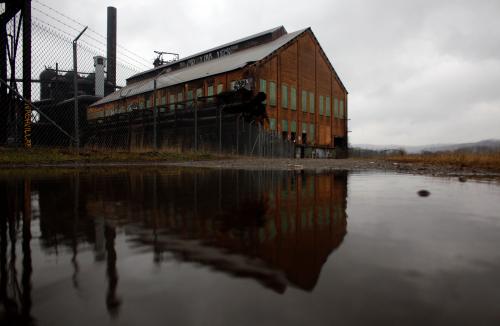As Greater Phoenix began to climb out of the housing collapse earlier this decade, regional leaders had a choice: continue the Valley’s traditional growth model built on real estate, retail, and business attraction; or try a different path, one anchored by advanced industries, trade, and a technologically skilled workforce.
Several dramatic economic trends lent some urgency to the decision. The housing market in Greater Phoenix was heating up again and, in fact, was leading the nation’s housing recovery. By fourth quarter 2014, metro Phoenix ranked fourth among the nation’s largest metro areas in the growth of housing prices—up 44.4 percent since the region’s lowest point in the recession. The region’s overall economic recovery was not as rapid, however, and output growth ranked 31st among metros. At the same time, quality of jobs and earnings among many workers had declined, and the region’s industry portfolio had lost power as an engine for stable growth and long-term prosperity.
In other words, the Phoenix metro was on track to return to business-as-usual.
Yet, a group of public, private, and civic leaders in Greater Phoenix had a different vision. Together, they created and launched Velocity, a new public-private partnership and strategy for reorienting the region’s economy toward its advanced industries. A recent Brookings report on advanced industries, which are defined by high levels of research and development (R&D) and science, technology, engineering, and math (STEM) workers, found that they are the engines of regional innovation and provide higher and faster-growing wages than other segments of the economy.
While Greater Phoenix trails the nation in its share of employment and output in these industries, it has strengths in growing sectors like semiconductor manufacturing, computer systems design, management consulting, and aerospace. And people in Greater Phoenix working in advanced industries earn, on average, over $90,000, compared to about $50,000 in all industries.
Velocity aims to build on strengths in these key sectors with strategies to sharpen the technological capabilities that support these industry clusters, generate a steady supply of skilled workers to grow these sectors, and connect firms in these advanced industries to markets abroad, from the NAFTA corridor to the Pacific Rim.
Its Metro Innovation Initiative, under development for over a year, will result in a series of global R&D centers that develop industry-defined technology solutions to increase the competitive position of their traditional and emerging clusters, like aerospace and health. Local industry consortiums will partner with topical experts from the region or elsewhere to define and design R&D projects and rapidly move them into commercial use. Potential technologies include intelligent control systems, active sensing and cyber-defense, health care devices, alternative energy management, and academic technologies.
The region also aims to increase STEM skills at all levels and connect workers to jobs in advanced industries. The Velocity plan calls for a sector-driven approach to training at the community-college level for middle-skill jobs, developed in conjunction with industries engaged in the Metro Innovations Initiative. In addition it will endeavor to revamp the region’s STEM education at primary and secondary school levels and strengthen the region’s engineering program at the postsecondary level.
Finally, the region is in the process of designing an export strategy that, in part, leverages a newly established trade office in Mexico City and will coordinate and expand trade services available to businesses interested in selling goods and services overseas.
“Velocity is a civics-driven initiative that has the power to truly transform the Greater Phoenix region,” said John Graham, chairman of Velocity’s Interim Board of Directors and chief executive officer of Sunbelt Holdings. “Our region’s business, education, and civic leaders have come together with the realization that we can return the Phoenix metro to a leading economic position, fueled by advanced industries and innovation.”
What’s exciting about the efforts underway in Phoenix is the speed with which the mayors, business leaders, and higher education presidents agreed on the region’s future. For the next generation of young residents to stay, build a business, and raise a family in the region, Phoenix’s signature features cannot be its weather or quality of life. It must emerge as a center of innovation, trade, and talent that creates lasting—not boom and bust—opportunities for its residents and businesses.
The initiative featured here emerged from work supported by the Brookings-Rockefeller Project on State and Metropolitan Innovation. Brookings recognizes that the value it provides is in its absolute commitment to quality, independence, and impact. Activities supported by its donors reflect this commitment and the analysis and recommendations are solely determined by the scholar.
The Brookings Institution is committed to quality, independence, and impact.
We are supported by a diverse array of funders. In line with our values and policies, each Brookings publication represents the sole views of its author(s).



Commentary
Velocity: Accelerating Phoenix’s emergence as an innovation economy
April 9, 2015